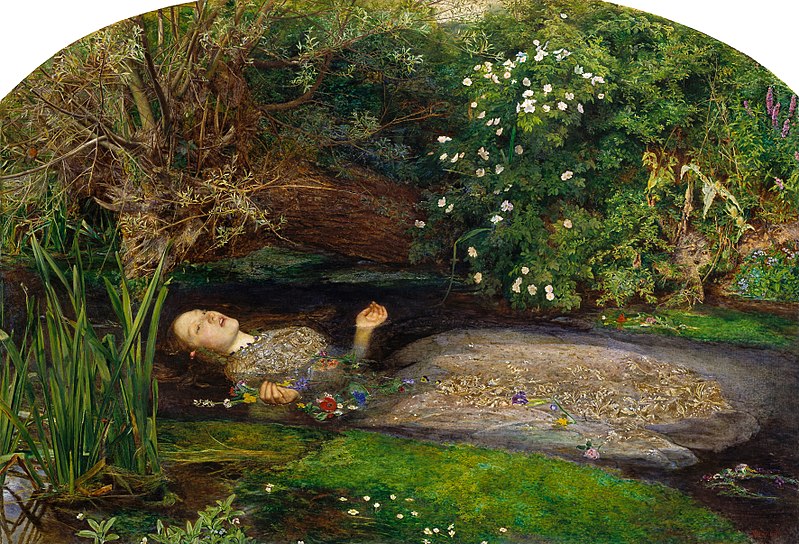@farmerman,
As much as I'd rather not further contribute to the "all artists are mad" myth (Most unfair! I'm certain there are just as many mad scientist & mad captains of industry, etc.

) ... I confess there
have been quite a few very interesting & eccentric types in the history of art.
Take the case of
Dante Gabriel Rosetti.
http://en.wikipedia.org/wiki/Dante_Gabriel_Rossetti
And his fellow Pre-Raphelites ..... considered the first avant-garde movement in art.
http://en.wikipedia.org/wiki/Pre-Raphaelite_Brotherhood
While some may not be too keen on the Pr-Raphaelites' paintings (I personally find them fascinating) it cannot be said that the stories about the movement were boring.
Never a dull moment! Beautiful young men & women, love, passion, sex, drugs, they rocked & shocked the establishment!
Rosetti's most notorious claim to fame (unfortunately for him) is the fact that
he violated his wife's grave, to retrieve a manuscript of his poetry that he, in his extreme grief at her early death, buried with her .... only to change his mind about the burying the poetry seven years later. So an exhumation was deemed necessary. Those poems, plus some new ones, were subsequently published.
She (
Elizabeth Siddal) is believed to have died, some 20 months after marrying Rossetti, of an overdoes of opium (&/or as a result of poisoning, having been a "devoted swallower" of
Fowler's Solution, a so-called complexion improver made from diluted arsenic.
 Self portrait, 1847
Self portrait, 1847
 Self-portrait of Elizabeth Siddal, 1854
Self-portrait of Elizabeth Siddal, 1854
 Elizabeth Sidal's grave site
Elizabeth Sidal's grave site
 Gabriel Rossetti completed "Beata Beatrix" a year after Siddal's death, with Elizabeth as Beatrix
Gabriel Rossetti completed "Beata Beatrix" a year after Siddal's death, with Elizabeth as Beatrix
Elizabeth was one of a number of very beautiful women associated with the Pre-Raphaelite movement.:
Pre-Raphaelite Women: Models, Lovers, Art-Sisters:
http://faculty.pittstate.edu/~knichols/lizzie.html#sisters
A hundred and fifty years on, Rossetti's actions remain controversial:
Did Rossetti really need to exhume his wife?:
http://www.the-tls.co.uk/tls/public/article872671.ece
Elizabeth was the model for a number of the Pre-Raphaelites, including Sir John Everett Millais's
Ophelia.
Quote:Ophelia was modelled by artist and muse Elizabeth Siddal, then 19 years old. Millais had Siddal lie fully clothed in a full bathtub in his studio at 7 Gower Street in London.[9] As it was now winter, he placed oil lamps under the tub to warm the water, but was so intent on his work that he allowed them to go out. As a result, Siddal caught a severe cold, and her father later sent Millais a letter demanding £50 for medical expenses.[4] According to Millais' son, he eventually accepted a lower sum
 http://en.wikipedia.org/wiki/Ophelia_%28painting%29
http://en.wikipedia.org/wiki/Ophelia_%28painting%29
-